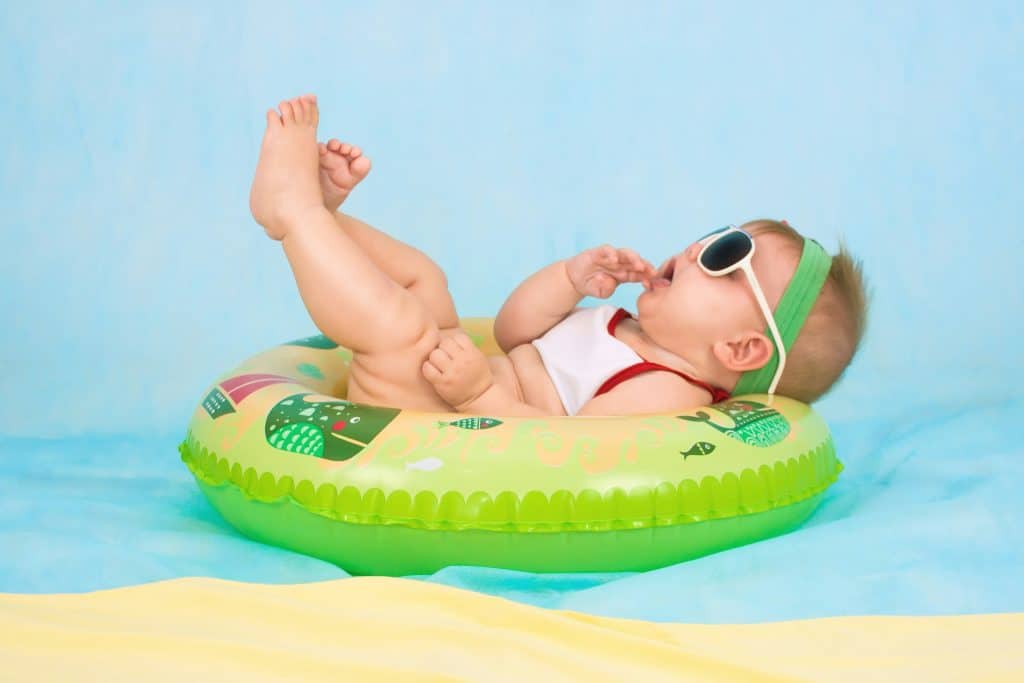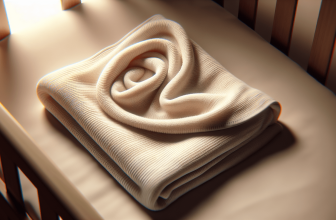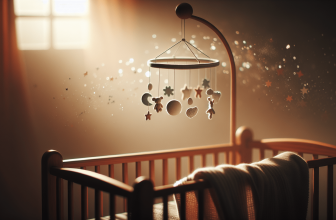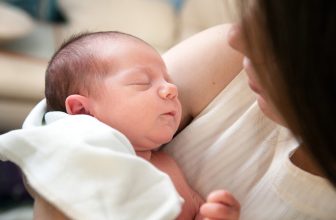Imagine cozying up your little one for a night of sound sleep, all bundled up in soft and warm fleece pajamas. While these adorable sleepwear options may seem tempting, many parents wonder if they are truly safe for their babies. In this article, discover the ins and outs of whether it is safe for your baby to sleep in fleece pajamas. From examining the material to considering temperature regulation, we’ll help you make an informed decision to keep your little one snug and secure throughout the night. So, grab a cup of tea, get comfortable, and let’s explore this important question together.
Potential Risks of Baby Sleeping in Fleece Pajamas
Overheating
One of the potential risks of baby sleeping in fleece pajamas is the risk of overheating. Fleece is a warm and cozy fabric, which can be ideal for colder nights or winter months. However, if the room temperature is too high or your baby is wearing heavy fleece pajamas, it can cause them to overheat. Overheating in babies can lead to discomfort, excessive sweating, and even an increased risk of SIDS (Sudden Infant Death Syndrome). It is important to ensure that your baby is not too hot when sleeping in fleece pajamas.
Suffocation Risk
Another potential risk to keep in mind when your baby sleeps in fleece pajamas is the risk of suffocation. Fleece pajamas are usually made of soft and plush material, which can pose a suffocation hazard if it comes into contact with your baby’s face. This risk is especially significant for younger babies who haven’t developed the ability to move their heads or reposition themselves during sleep. It is crucial to choose pajamas with proper fit and make sure that there are no loose threads or embellishments that could potentially pose a suffocation risk.
Fire Hazard
While fleece is a cozy fabric choice for pajamas, it is important to note that it can be a fire hazard. Fleece is a synthetic material that is highly flammable and can ignite easily. In the unfortunate event of a fire or a small flame, fleece pajamas can quickly catch fire and put your baby at risk. To minimize this risk, it is essential to ensure that your baby’s sleep environment is free from potential fire hazards and that you choose flame-resistant sleepwear for your little one.
Choosing the Right Fleece Pajamas
Consider the Weight and Thickness
When it comes to choosing fleece pajamas for your baby, it is crucial to consider the weight and thickness of the fabric. Opt for lighter-weight and thinner fleece materials, especially for warmer months or if your baby tends to get sweaty easily. Thicker and heavier fleece pajamas may trap heat and increase the risk of overheating. By selecting the appropriate weight and thickness, you can ensure that your baby stays comfortable and safe while sleeping.
Look for Breathable Materials
It’s important to choose fleece pajamas that are made from breathable materials. Look for fleece pajamas that have moisture-wicking properties to help prevent excessive sweating and keep your baby dry and comfortable throughout the night. Additionally, consider pajamas with ventilation features, such as mesh panels or strategic airflow designs, to aid in temperature regulation. Breathable fleece materials can help reduce the risk of overheating and promote a peaceful night’s sleep for your baby.
Check for Proper Fit
Proper fit is crucial when it comes to choosing fleece pajamas for your baby. Ill-fitting pajamas can increase the risk of suffocation or restrict your baby’s movement during sleep. Make sure to choose pajamas that fit your baby snugly, but not too tight, and avoid loose or oversized garments that could potentially cover your baby’s face. Regularly check for any signs of wear and tear, loose threads, or embellishments that could pose a safety risk. Always prioritize your baby’s safety and comfort when selecting fleece pajamas.
Tips for Safe Sleep in Fleece Pajamas
Maintain a Comfortable Room Temperature
To ensure your baby’s safety while sleeping in fleece pajamas, it is important to maintain a comfortable room temperature. The ideal room temperature for your baby’s sleep environment should be between 68 to 72 degrees Fahrenheit (20 to 22 degrees Celsius). This temperature range helps prevent overheating and creates a conducive sleep environment. Use a reliable room thermometer to monitor the temperature and make necessary adjustments, such as using a fan or adjusting the thermostat, to maintain the optimal temperature for your baby’s comfort.
Avoid Overdressing
When your baby is wearing fleece pajamas, it is crucial to avoid overdressing. Fleece is a warm and cozy fabric, and if your baby is wearing too many layers or heavy blankets on top of fleece pajamas, they are more likely to overheat. Dress your baby in a single layer of fleece pajamas appropriate for the ambient room temperature. Consider using a sleep sack or a wearable blanket instead of additional blankets to provide warmth without the risk of suffocation or overheating.
Use a Firm Mattress with Tight-Fitting Sheets
Creating a safe sleep environment for your baby involves more than just the choice of pajamas. It also includes the type of mattress and bedding used. Use a firm mattress that meets safety standards to prevent suffocation and reduce the risk of SIDS. Fit the mattress with tight-fitting sheets to ensure a secure sleeping surface for your baby. Avoid using soft and fluffy bedding materials, such as pillows, stuffed animals, or loose blankets, as they can increase the risk of suffocation. By creating a safe and comfortable sleep space, you can promote healthy and restful sleep for your baby.
Alternatives to Fleece Pajamas
Cotton Pajamas
If you have concerns about the potential risks associated with fleece pajamas, an alternative option is to choose cotton pajamas. Cotton is a breathable and lightweight fabric that can help regulate your baby’s body temperature, keeping them cool in warmer months and providing warmth in cooler months. Look for cotton pajamas that fit well and provide comfort for your baby’s sleep. With the wide range of cotton sleepwear options available, you can find styles and designs that suit your baby’s needs while ensuring their safety.
Merino Wool Pajamas
Another excellent alternative to fleece pajamas is merino wool pajamas. Merino wool is a natural fiber that offers superior breathability and temperature regulation. It effectively wicks away moisture, keeping your baby dry and comfortable throughout the night. Merino wool is also hypoallergenic and has natural antimicrobial properties, making it a great choice for babies with sensitive skin or allergies. Choose merino wool pajamas that are soft, lightweight, and have a snug fit for maximum safety and comfort.
Sleep Sacks
Sleep sacks, also known as wearable blankets, are another safe alternative to fleece pajamas. Sleep sacks provide warmth and comfort for your baby without the risk of loose blankets or suffocation. They come in various sizes and materials, including lightweight fleece, cotton, or even organic options. Sleep sacks allow for safe movement and can help your baby maintain a comfortable body temperature throughout the night. Look for sleep sacks that are appropriate for the current season and consider ones with adjustable features to accommodate your baby’s growth.

Best Practices for Safe Sleep
Back to Sleep Positioning
The back-to-sleep positioning is highly recommended for babies to reduce the risk of SIDS. Always place your baby on their back for sleep, both for naps and nighttime sleep. Sleeping on their stomach or side significantly increases the chances of suffocation or overheating. Encourage your baby to sleep in this position until they can independently roll over by themselves.
Clear Sleeping Area of Pillows and Soft Bedding
To ensure a safe sleep environment, it is crucial to clear the sleeping area of pillows and soft bedding. Pillows, stuffed animals, and loose blankets can pose suffocation risks for babies. Create a clutter-free sleep space by removing any unnecessary items and opt for minimal bedding, such as a fitted sheet and a sleep sack or a firm mattress. By providing a clear and safe sleeping area, you reduce the risk of accidents during sleep.
Utilize a Pacifier during Sleep
Using a pacifier during sleep can also promote safe sleep practices. The American Academy of Pediatrics recommends giving your baby a pacifier during sleep, starting from the first few weeks of life. Using a pacifier can reduce the risk of SIDS, although the exact reason remains unclear. If your baby rejects the pacifier or spits it out while sleeping, there is no need to force it. Ensure the pacifier is clean and in good condition before using it during sleep.
In conclusion, while fleece pajamas can be cozy and comfortable for your little one, it is crucial to be aware of the potential risks they may pose. Overheating, suffocation, and fire hazards are important factors to consider when choosing and using fleece pajamas for your baby. By following the tips for safe sleep, considering alternative pajama options, and implementing best practices, you can create a safe and comfortable sleep environment for your baby, ensuring they sleep soundly through the night. Always prioritize your baby’s safety and comfort when selecting sleepwear and practicing safe sleep habits.








